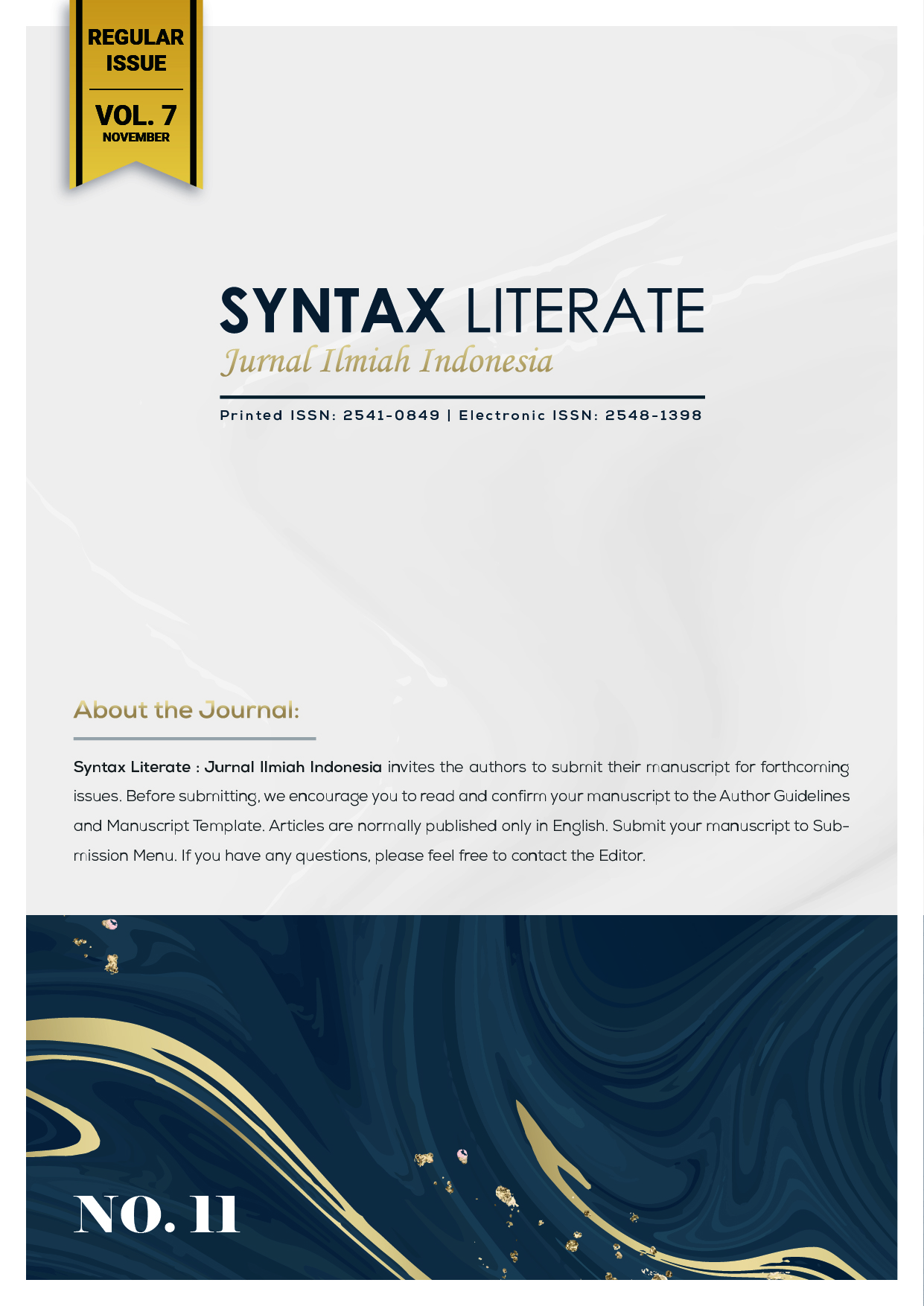Strategi Kontra Intelijen Dalam Menghadapi Transformasi Pendanaan Terorisme Jamaah Islamiyah
Abstract
Jamaah Islamiyah (JI) merupakan kelompok teroris yang menjalankan sistem organsasi tertutup dan sangat adaptif terhadap perkembangan, termasuk di dalamnya modus pendanan dana. Modus pendanaan JI terus bertransformasi menyesuaikan perkembangan jaman dan lingkungan, termasuk dalam menggunakan potensi donasi dari masyarakat yang sangat besar melalui lembaga non profit. Pentingnya pendanaan bagi kelompok teror membuat pemberantasannya akan berpengaruh pada operasional kelompok teror, sehingga diperlukan strategi kontra intelijen dalam melakukannya. Tulisan ini merupakan penelitian kualitatif melalui studi literatur. Hasil dari penelitian ini diperoleh bahwa pemberantasan pendanaan teror dapat dilakukan dengan pendekatan kontra terorisme defensif dan ofensif termasuk fungsi intelijen dalam kerjasama antar lembaga, peningkatkan edukasi kesadaran masyarkat dan reformasi regulasi, sehingga diperoleh strategi kontra intelijen yang diharapkan dapat berguna dalam pemberantasan dan penanggulangan pendanaan terorisme.
Downloads
References
Arianti, F. D., Pertiwi, M. D., Triastono, J., Purwaningsih, H., Minarsih, S., Hindarwati, Y., Jauhari, S., Sahara, D., & Nurwahyuni, E. (2022). Study of Organic Fertilizers and Rice Varieties on Rice Production and Methane Emissions in Nutrient-Poor Irrigated Rice Fields. Sustainability, 14(10), 5919.
Assyamiri, M. A. T., & Hardinanto, A. (2022). Penggunaan Bitcoin Dalam Cryptocurrency Terhadap Pendanaan Terorisme. INICIO LEGIS, 3(1), 1–17.
Barnes, P. J. (2017). Cellular and molecular mechanisms of asthma and COPD. Clinical Science, 131(13), 1541–1558.
Biswas, D. (2019). Sensory aspects of retailing: Theoretical and practical implications. In Journal of Retailing (Vol. 95, Issue 4, pp. 111–115). Elsevier.
Carlisle, J. F. (2004). Morphological processes that influence learning to read. Handbook of Language and Literacy: Development and Disorders, 1, 318–339.
Cope, D. G. (2014). Methods and meanings: credibility and trustworthiness of qualitative research. Oncology Nursing Forum, 41(1).
Dahl, R., Kapp, A., Colombo, G., De Monchy, J. G. R., Rak, S., Emminger, W., Riis, B., Grønager, P. M., & Durham, S. R. (2008). Sublingual grass allergen tablet immunotherapy provides sustained clinical benefit with progressive immunologic changes over 2 years. Journal of Allergy and Clinical Immunology, 121(2), 512–518.
Davis, J. B. (2006). The turn in economics: neoclassical dominance to mainstream pluralism? Journal of Institutional Economics, 2(1), 1–20.
Ford, J. D., & Courtois, C. A. (2020). Defining and understanding complex trauma and complex traumatic stress disorders.
Freeman, G. J., Wherry, E. J., Ahmed, R., & Sharpe, A. H. (2006). Reinvigorating exhausted HIV-specific T cells via PD-1–PD-1 ligand blockade. The Journal of Experimental Medicine, 203(10), 2223–2227.
Freeman, M., & Ruehsen, M. (2013). Terrorism financing methods: An overview. Perspectives on Terrorism, 7(4), 5–26.
Godson, R. (1995). Covert action: neither exceptional tool nor magic bullet. US Intelligence at the Crossroads: Agendas for Reform, Potomac Books, 30.
Gowhor, H. S. (2022). The existing financial intelligence tools and their limitations in early detection of terrorist financing activities. Journal of Money Laundering Control, 25(4), 843–863.
Hwang, J., Choi, D., Han, S., Choi, J., & Hong, J. (2019). An assessment of the toxicity of polypropylene microplastics in human derived cells. Science of the Total Environment, 684, 657–669.
Lowe, D. T. (2017). Cupping therapy: An analysis of the effects of suction on skin and the possible influence on human health. Complementary Therapies in Clinical Practice, 29, 162–168.
Mandela, R., Bellew, M., Chumas, P., & Nash, H. (2019). Impact of surgery timing for craniosynostosis on neurodevelopmental outcomes: a systematic review. Journal of Neurosurgery: Pediatrics, 23(4), 442–454.
Maulana, H. A. (2021). Persepsi mahasiswa terhadap pembelajaran daring di pendidikan tinggi vokasi: Studi perbandingan antara penggunaan Google Classroom dan Zoom Meeting. Edukatif: Jurnal Ilmu Pendidikan, 3(1), 188–195.
Melendez, J. A., Furnstahl, R. J., Phillips, D. R., Pratola, M. T., & Wesolowski, S. (2019). Quantifying correlated truncation errors in effective field theory. Physical Review C, 100(4), 44001.
Murthi, N. K. (2022). Implementasi Resolusi Dewan Keamanan Perserikatan Bangsa-Bangsa (PBB) Nomor 2462 dalam Menanggulangi Pendanaan Terorisme di Indonesia oleh Badan Nasional Penanggulangan Terorisme (BNPT). UIN Sunan Ampel Surabaya.
Phythian, C., Michalopoulou, E., Duncan, J., & Wemelsfelder, F. (2013). Inter-observer reliability of Qualitative Behavioural Assessments of sheep. Applied Animal Behaviour Science, 144(1–2), 73–79.
Pickett, K. H. S., & Pickett, J. M. (2002). Financial crime investigation and control. John Wiley & Sons.
Prasetya, A. Y., Subroto, A., & Nurish, A. (2021). Model Pendanaan Terorisme Melalui Media Cryptocurrency. Journal of Terrorism Studies, 3(1), 3.
Prunckun, H. (2014). The First Pillar of Terror—Kill One, Frighten Ten Thousand: A Critical Discussion of the Doctrinal Shift Associated with the ‘New Terrorism.’ The Police Journal, 87(3), 178–185.
Rasyid, A. A., & Harmain, H. (2018). Analisis Penerapan Prinsip Akuntansi dalam Meningkatkan Akuntabilitas Laporan Keuangan Masjid di Indonesia.
Safrudin, R., & IP, S. (2018). Penanggulangan Terorisme di Indonesia Melalui Penanganan Pendanaan Terorisme: Studi Kasus Al-Jamaah Al-Islamiyah (JI). Jurnal Pertahanan & Bela Negara, 3(1), 113–138.
Setiawan, E. (2019). Interpretasi Paham Radikalisme Pascabom di Surabaya dalam Perspektif Historis. SANGKEP: Jurnal Kajian Sosial Keagamaan, 2(2), 119–138.
Slick, S. N., & Lee, C. S. (2014). The relative levels of grit and their relationship with potential dropping-out and university adjustment of foreign students in Korea. Journal of Digital Convergence, 12(8), 61–66.
Solahudin, M. (2013). Pengembangan metode pengendalian gulma pada pertanian presisi berbasis multi agen komputasional.
Sulick, M. J. (2014). Spying in America: Espionage from the Revolutionary War to the dawn of the Cold War. Georgetown University Press.
Taylor, J. B. (2007). Housing and monetary policy. National Bureau of Economic Research.
Van Cleave, M. (2013). What is counterintelligence. Intelligencer: Journal of US Intelligence Studies, 20(2), 57–65.
Vishnevsky, T., & Beanlands, H. (2004). Qualitative research. Nephrology Nursing Journal, 31(2), 234.
West, M. L. (2007). Indo-European poetry and myth. Oxford university press.
Copyright (c) 2022 Ika Veni Anisa, Muhamad Syauqillah

This work is licensed under a Creative Commons Attribution-ShareAlike 4.0 International License.











